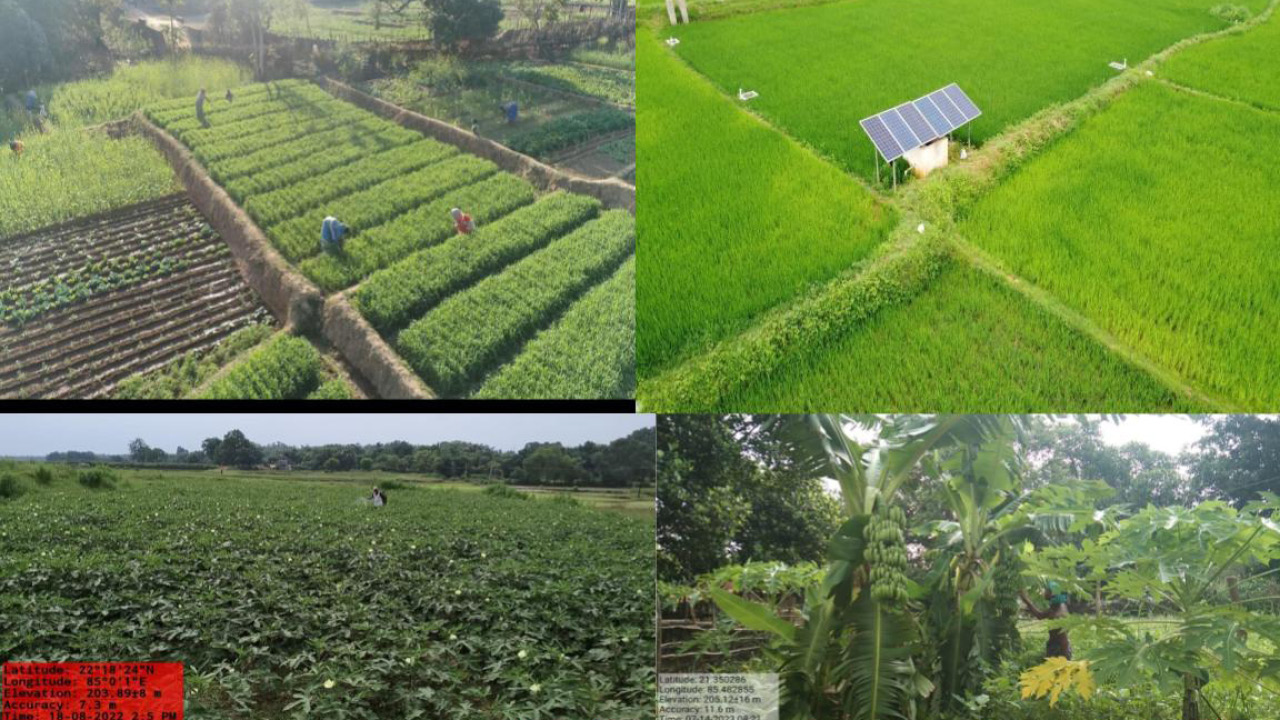Odisha Tribal Empowerment & Livelihood Programme Plus, Khorda, Government of Odisha

Odisha Tribal Empowerment & Livelihoods Programme (OTELP)
Problem
- Grassroots potential in tribal areas remains untapped
- Challenges include lack of awareness, education, and tribal acceptance
- Mobilizing community leaders for cohesive village development is difficult
- Tribals lacked sustainable means for income generation and resource utilisation
- Poor provisioning of quality inputs, new skills, technologies, and market linkages
Solution
- Launch of OTELP Plus, focusing on micro Watershed approach
- Creation of infrastructures like Land Levelling, Micro Irrigation, Kitchen Gardens, and Farm Ponds
- Promotion of community-driven activities from planning to execution
- Training and capacity-building initiatives for sustainable farming
- Financial aid from the State Government and convergence of resources from other schemes
- Development of clusters focusing on farm and non-farm-based activities
- Establishment of Village Development Associations (VDA) and Producer Groups
Outcomes
- Over 3,500 tribal beneficiaries supported in farm-based activities and 4,000 households with Nutritional garden activities
- Establishment of 239 SHGs for non-farm activities
- 90% of beneficiaries under OTELP Plus reported a 40% enhancement in income
- 40% increase in land cultivation due to productive use of previously unutilised lands
- 20% of individual farm producers joined producer groups under the Intensive Farming Clusters (IFC) initiative
- Overall enhancement in soil fertility, income levels, and irrigation facilities
Project Details
Category: Tribal Empowerment & Livelihoods
Project: Odisha Tribal Empowerement & livelihoods Programme Plus
Organisation: Odisha Tribal Empowerment & Livelihood Programme Plus, Khorda, Government of Odisha
Start Date: 02-Oct-2011
Problem
Tribes in Odisha were often marginalised, with their potential at the grassroots level remaining unrealised. The challenges of fostering development and empowerment in these regions were multi-fold, ranging from a lack of awareness and education to hesitation from the tribal communities themselves. Mobilising village leaders to unify different actors and ensure community betterment proved challenging. Additionally, there was an acute need for sustainable livelihoods, harnessing natural resources, and promoting both farm and non-farm-based activities.
Solution
In response to these challenges, the Odisha Tribal Empowerment & Livelihoods Programme (OTELP Plus) was launched. The program, operational in multiple micro watersheds, aimed to build and leverage the capacity of tribal families through farm & non-farm-based activities. Essential infrastructures, like Land Levelling, Irrigation facilities, and Kitchen Gardens, were established to foster sustainability and increase income. A community-driven approach was emphasized, ensuring the tribal community was involved from planning to execution. The program also initiated capacity-building exercises, introducing scientific farming concepts and integrating with other ongoing state and central government schemes.
Outcomes
The OTELP initiative, launched in 2003-04, aims to empower tribal communities in Odisha by enabling them to effectively harness local natural resources. This is achieved by building their capacity in various skills and technologies. By 2011-12, the programme expanded as “OTELP Plus,” emphasizing a micro watershed approach to benefit tribal families through farm and non-farm-based activities. The OTELP Plus initiative has had a transformative impact on the tribal communities of Odisha. Thousands of beneficiaries have been empowered with sustainable farming and non-farming activities, leading to significant boosts in their income. Specifically, there has been a 40% increase in income for 90% of these beneficiaries. Through the program, there has also been a notable increase in land cultivation, better utilization of previously unused lands, and a significant number of individual farm producers have been integrated into producer groups. Overall, the initiative has successfully improved soil fertility, increased annual household incomes, and established sustainable farming practices in the region.

